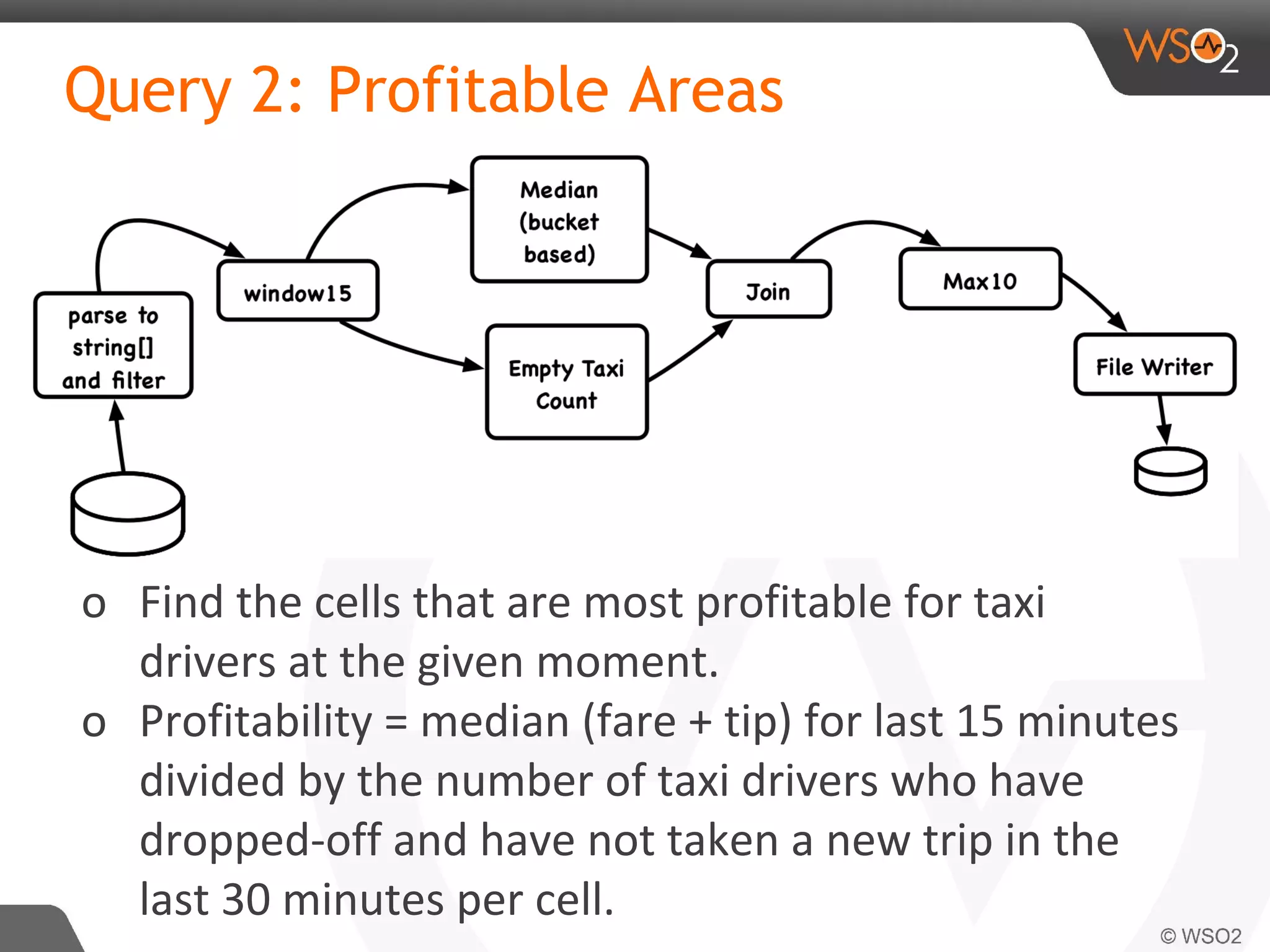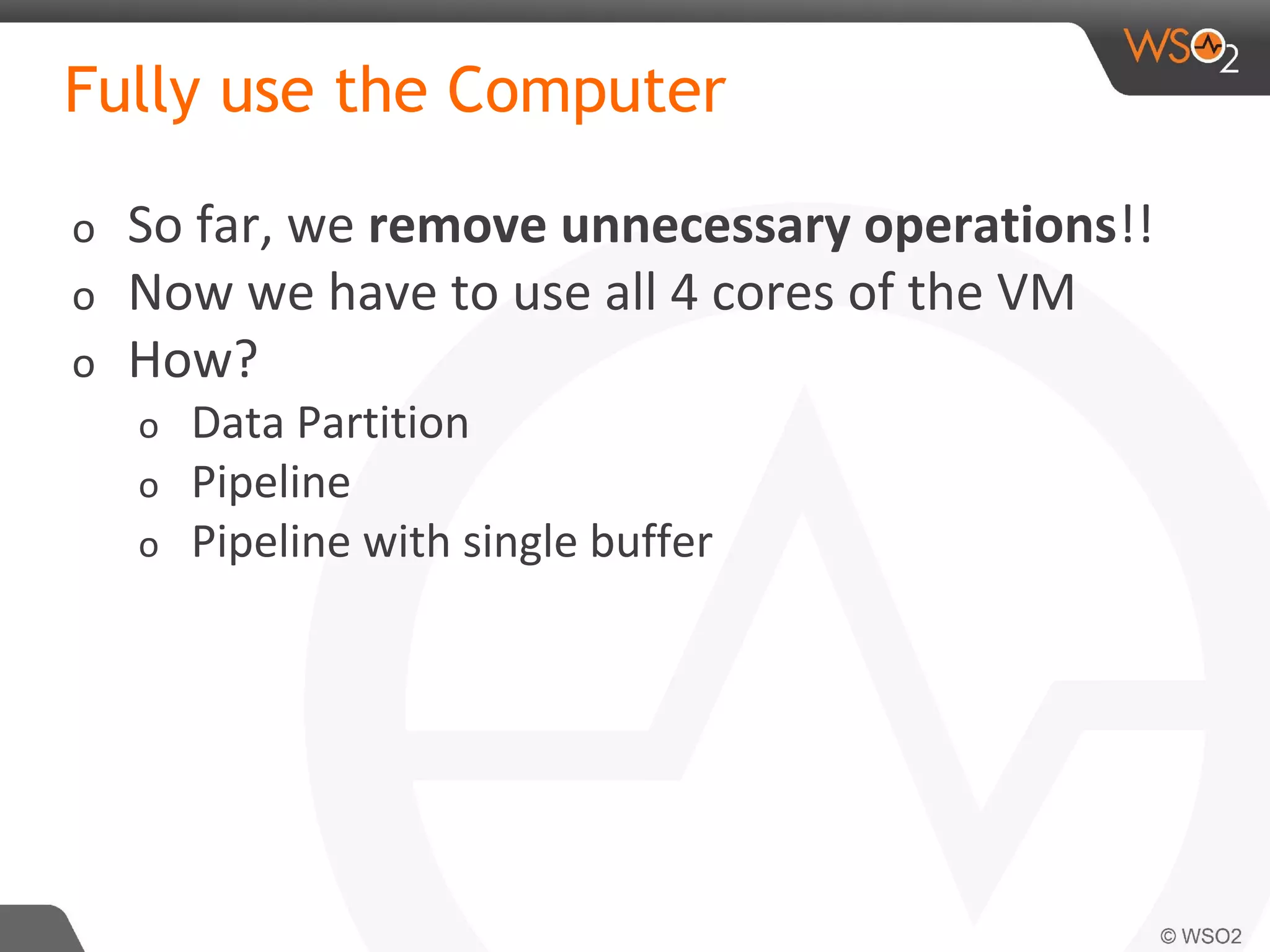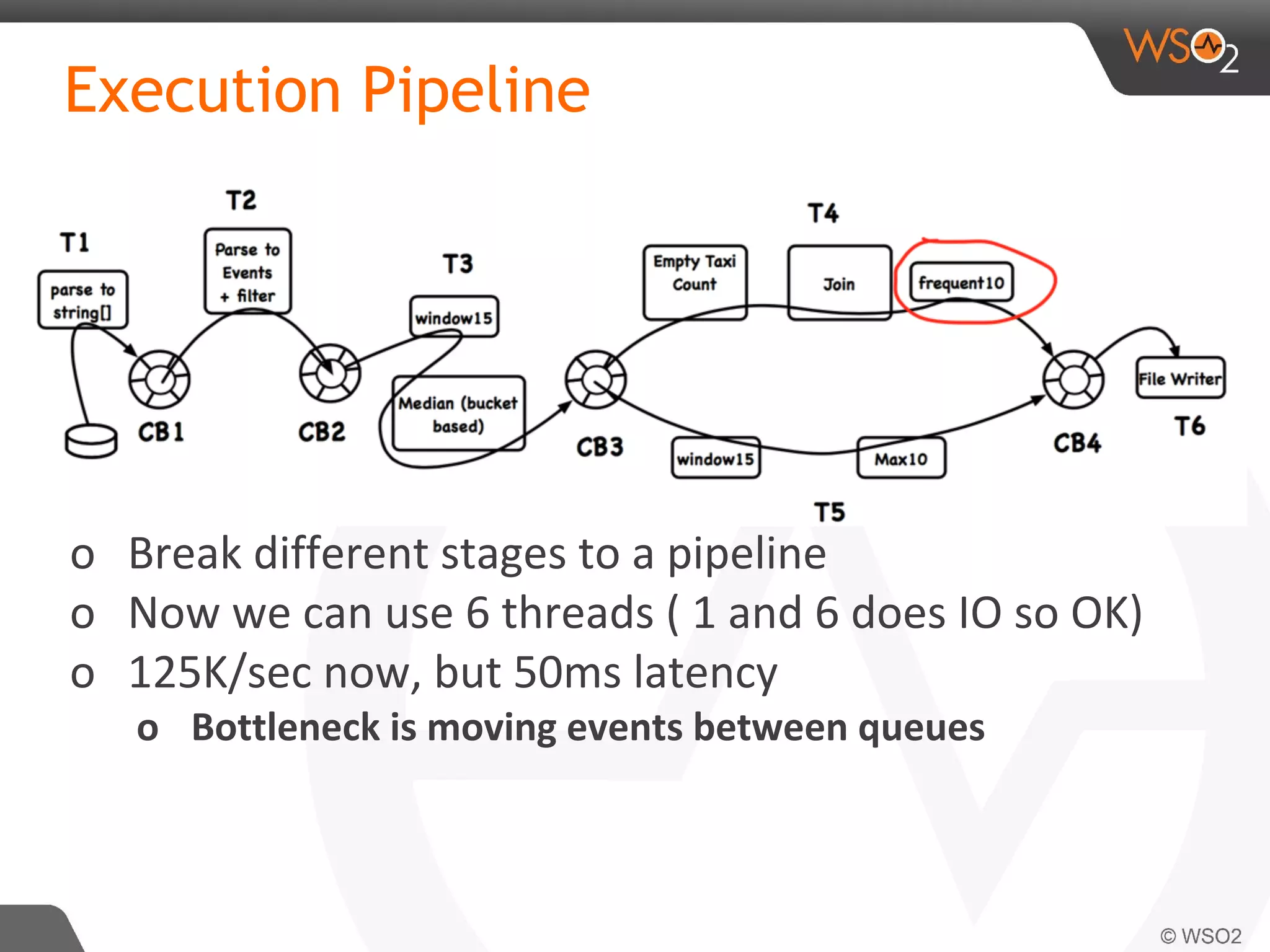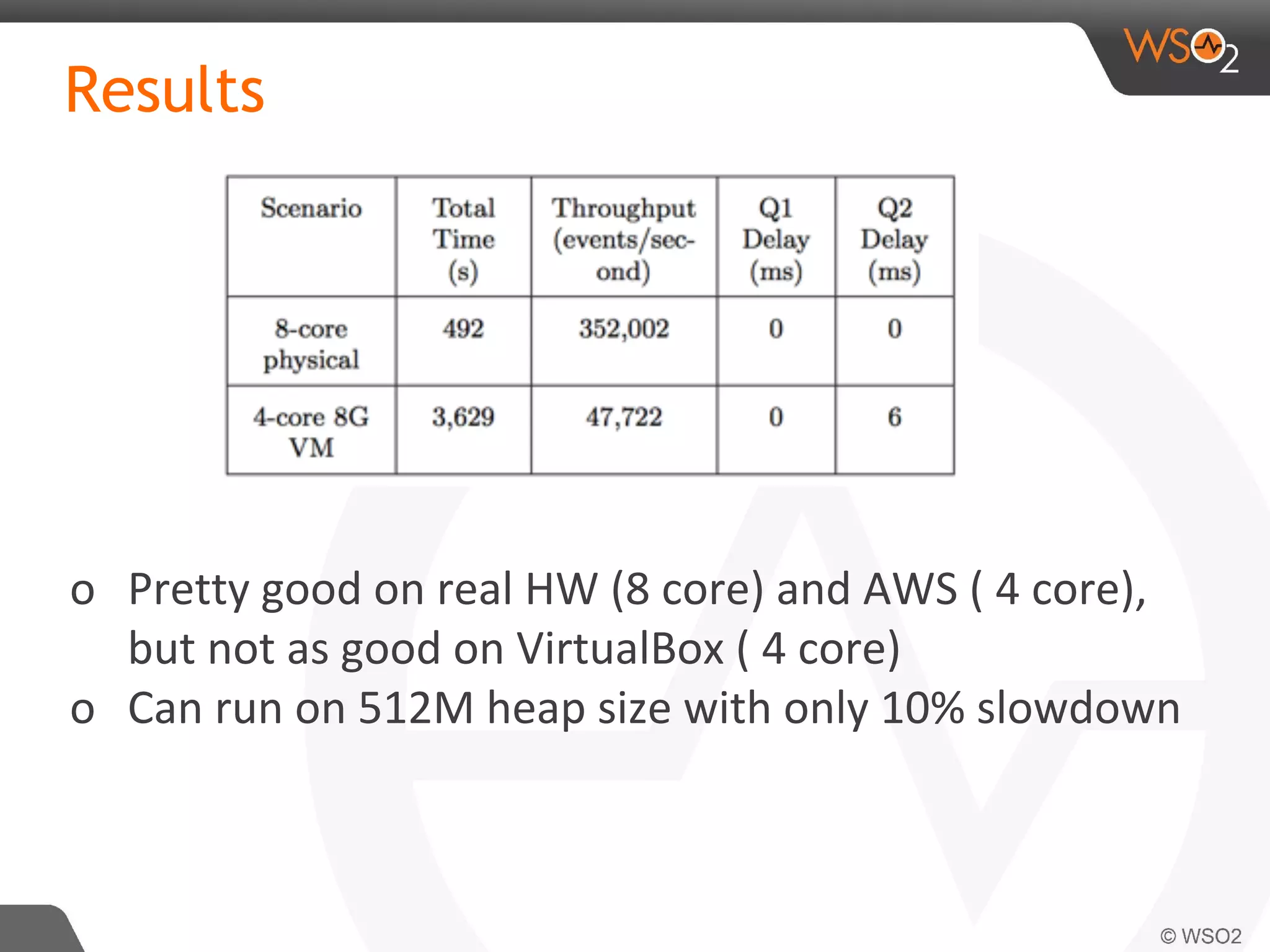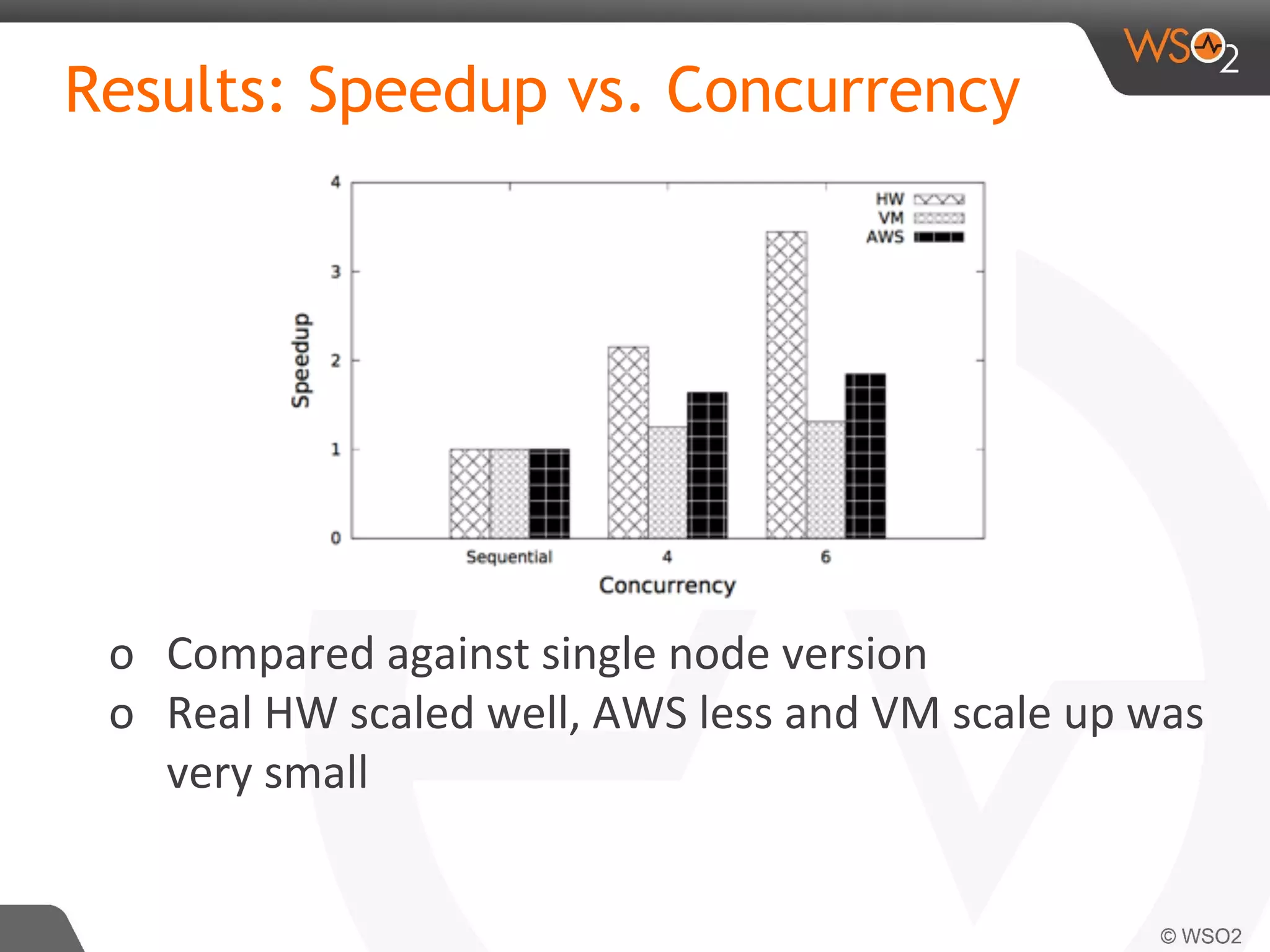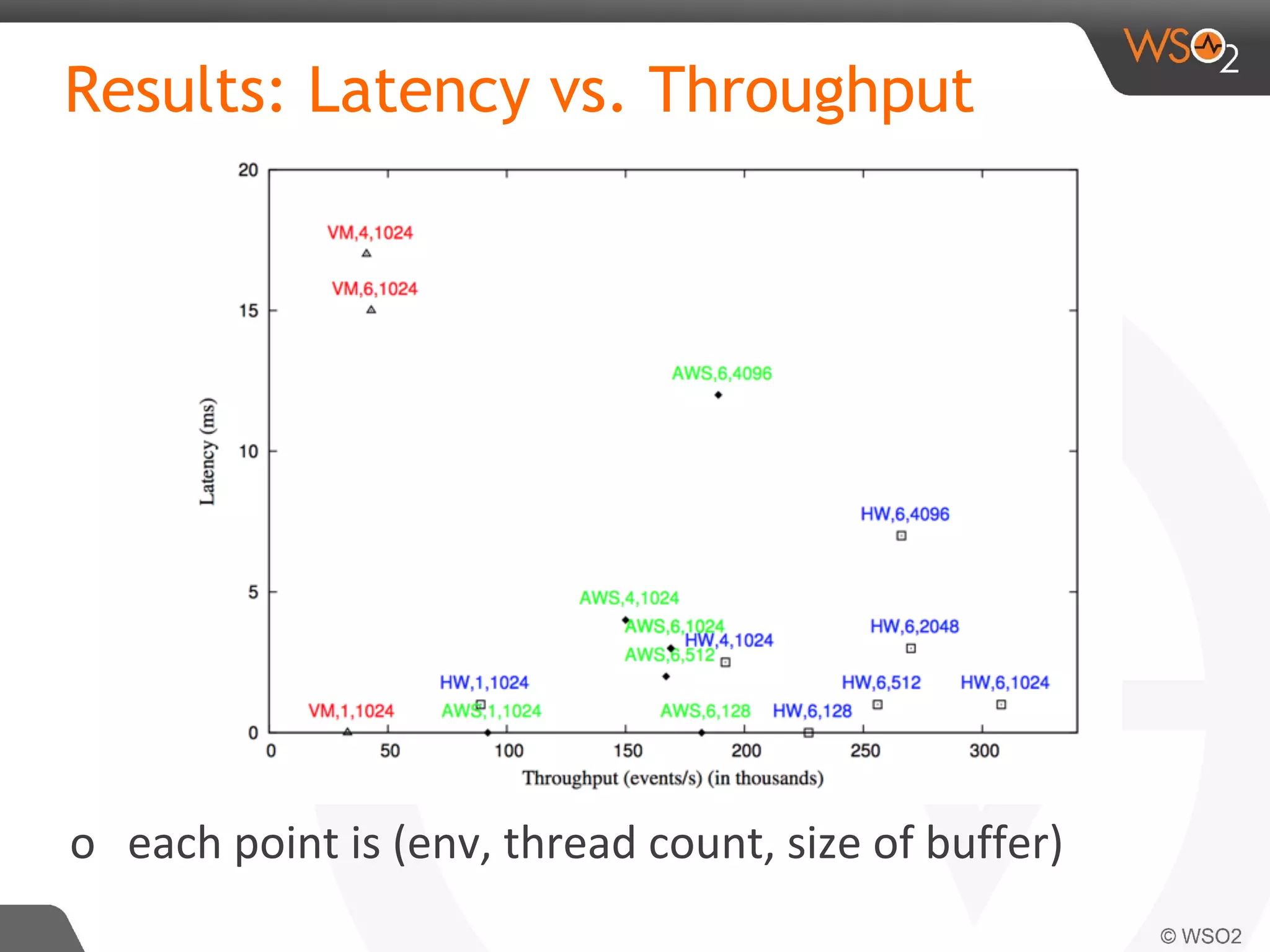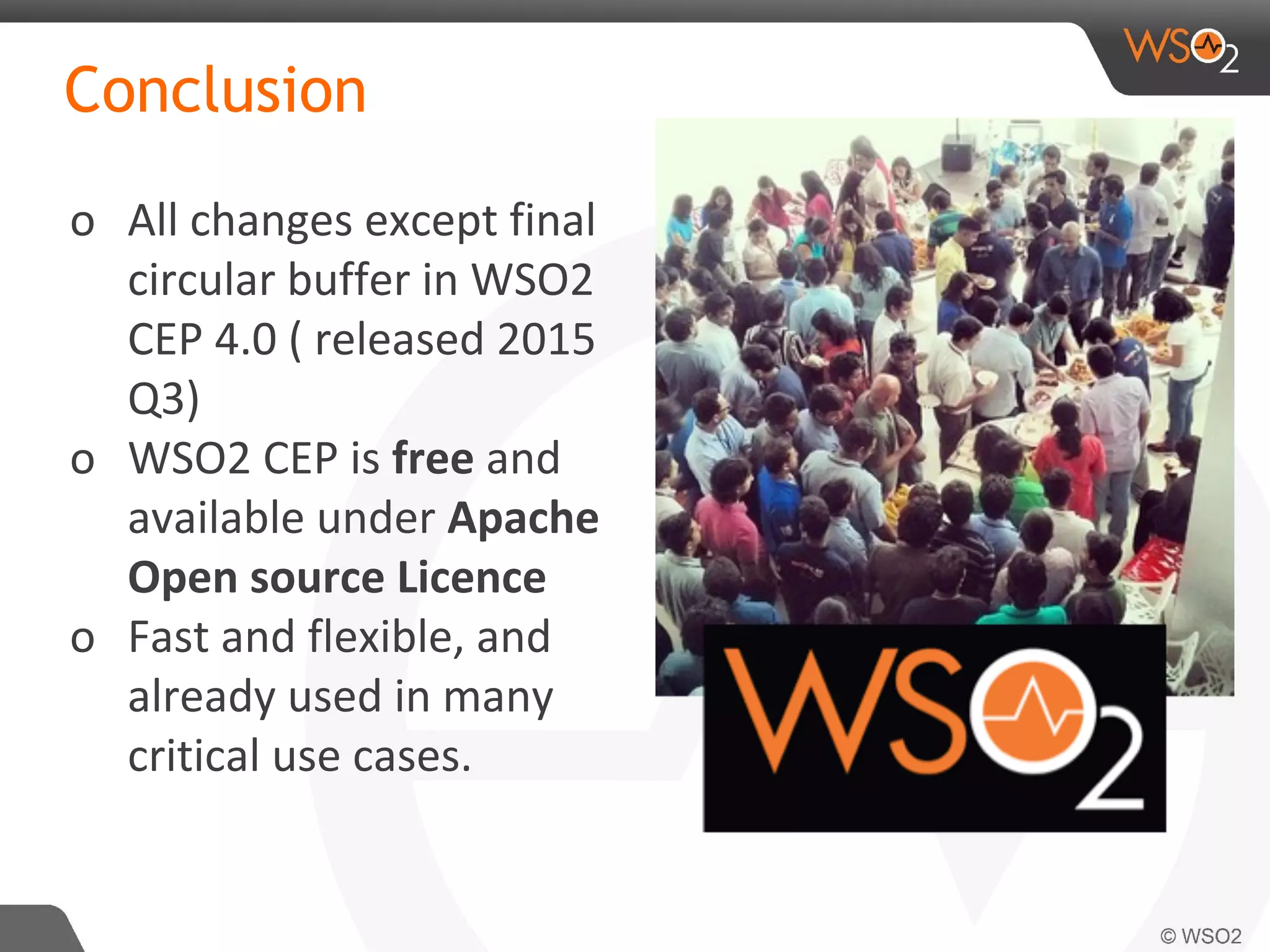The document discusses the application of WSO2 Complex Event Processor (CEP) for continuous analytics on geospatial data streams, specifically using taxi ride data from New York in 2013. It presents two queries focusing on frequent taxi routes and profitable areas for drivers, along with various optimization techniques to enhance performance. The results indicate improvements in throughput and latency, leading to successful implementations on both physical and cloud environments.

![Problem o Dataset Taxi rides collected from New York in year 2013[1] o Each line has timestamp, start end locations, fare details etc. o 13K cars, 173 million events o 2 Queries o Queries based on 0.5km and 0.25km cells over New York. [1]. Chris Whong (http://chriswhong.com/open-data/foil_nyc_taxi/)](https://image.slidesharecdn.com/debsgrandchallange2015-150630124647-lva1-app6891/75/ACM-DEBS-Grand-Challenge-Continuous-Analytics-on-Geospatial-Data-Streams-with-WSO2-Complex-Event-Processor-2-2048.jpg)
![CEP Operators 1. Filters or transformations (process a single event) from Ball[v>10] select .. insert into .. 2. Windows + aggregation (track window of events: time, length) from Ball#window.time(30s) select avg(v) .. 3. Joins (join two event streams to one) from Ball#window.time(30s) as b join Players as p on p.v < b.v 4. Patterns (state machine implementation) from Ball[v>10], Ball[v<10]*,Ball[v>10] select .. 5. Event tables (map a database as an event stream) Define table HitV (v double) using .. db info ..](https://image.slidesharecdn.com/debsgrandchallange2015-150630124647-lva1-app6891/75/ACM-DEBS-Grand-Challenge-Continuous-Analytics-on-Geospatial-Data-Streams-with-WSO2-Complex-Event-Processor-3-2048.jpg)


